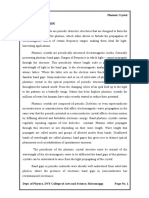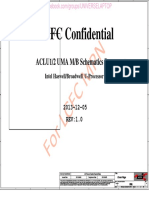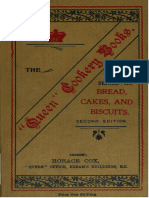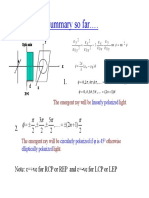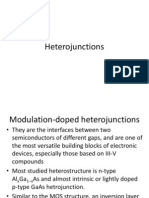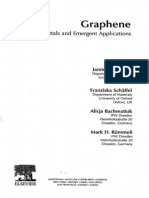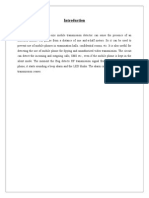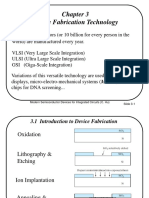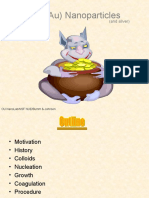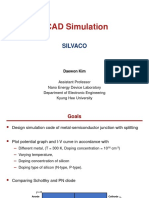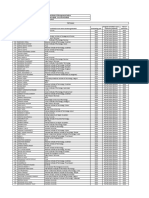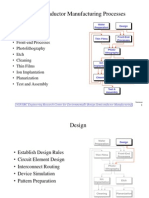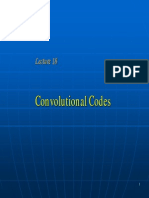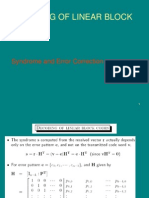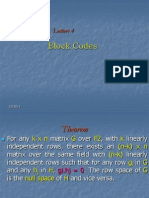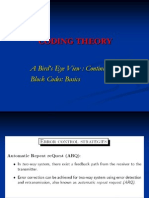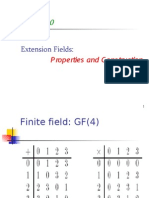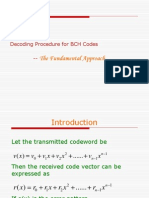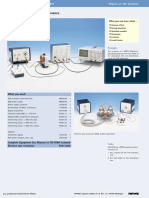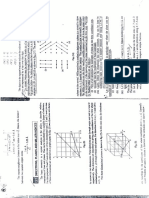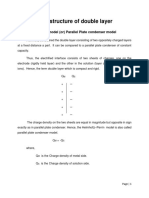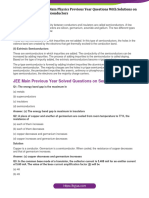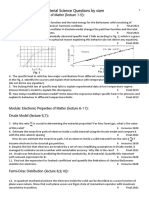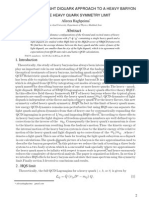MICROELECTRONICS TECHNOLOGY
Introduction
Microelectronics : Study of very small designs and components VLSI: Very Large Scale Integrated Circuit Microelectronics (VLSI) technology: Study of how VLSI circuits are
made. Circuit: Discrete components soldered together Ex: PCB Integrated Circuit: Both active and passive components housed in the same substrate Substrate: Slice of semiconductor that serves as the foundation for construction of components
�Introduction
Classification based on complexity SSI MSI LSI VLSI ULSI
GSI
:10-100 transistors : 100-1000 transistors : 1000-20,000 transistors : 20,000-10,00,000 transistors : 10,00,000-1,00,00,000 transistors : >1,00,00,000 transistors
Elemental semiconductors: Silicon, Germanium Compound semiconductors: InSb, InAs,GaAs,GaP,GaN,GaSb,SiC Passive components: Resistors, Capacitors etc. Active components: Transistors( BJT, MOSFET)
�Material properties
Silicon Elemental Wide Energy Gap Formation of SiO2 : high-quality silicon dioxide can be grown
thermally Indirect Energy Gap Economic Consideration GaAs Compound Electron mobility is higher: faster devices
�Terminologies
Lattice Unit cell Basis Cristal structure
: Periodic arrangement of lattice : representative of entire lattice : same group of atoms : lattice + basis
�Crystal Structure- Simple Cubic
z 001 101
011
111
000 100 structure 110
010
Coordination Number=6 Nearest neighbor distance: a Atoms per unit cell: (1/8)X8=1
Ex: Polonium
�Crystal Structure- Body Centered
z
(1/2,1/2,1/2)
a 3 a a 2
y Structure x
Coordination number=8 Nearest neighbor distance:3a/2
Ex. Molybdenum , Tentalum,
Tungsten, Sodium
�Example:1
If we pack hard spheres in a bcc lattice such that the atom in the
center just touches the atoms at the corners of the cube, find the fraction of the bcc unit cell volume filled with hard sphere.
a 3
a a 2 68% filled 32% empty
Spheres (atoms) per unit cell = (1/8) x 8 + 1= 2; Length of diagonal = 3a Radius of each sphere = (3/4)a Volume of each sphere = 2X(4 / 3) X X (a3 X 3X3/64)= 0.67977 a3 Maximum fraction of unit cell filled = (0.67977) a3)/(a3)=0.68
�Crystal Structure: Face centered
z Coordination number=12
000 001 010 011
y 1/2 1/2 0 1 1/2 1/2 1/2 1/2 1/2 1/2 0 1
0, 1/2, 1/2
x Nearest neighbor distance : a/2
0 1 1/2 1/2 1/2 1/2
(bottom) (top) (back) (front) (left) (right)
Copper, Gold , Nickel,Platinum, Silver
�Crystal Structure :Zinc blend Sphalerite Structure
Ex.: Si , GaAs Coordination number:4
000 001 010 011
0,1/2,1/2
+1/4
Distance between two neighboring atoms: (3/4)a
�Crystal Structure: Face centered
0 0 0 0 1 1 1 1 1/2 1/2 0 1 1/2 1/2 0 0 1 1 0 0 1 1 1/2 1/2 1/2 1/2 0 1 0 1 0 1 0 1 0 1 0 1 1/2 1/2 1/2 1/2 1/4 1/4 1/4 1/4 5/4 5/4 5/4 5/4 3/4 3/4 1/4 5/4 3/4 3/4 1/4 1/4 5/4 5/4 1/4 1/4 5/4 5/4 3/4 3/4 3/4 3/4 1/4 5/4 1/4 5/4 1/4 5/4 1/4 5/4 1/4 5/4 1/4 5/4 3/4 3/4 3/4 3/4
+1/4
�Example:2
A GaAs crystal is on a coordinate system such that an arsenic
atom sits at the position (000) and a gallium atom sits at (a/4,a/4,a/4) . Find the x,y,z coordinates of the other three neighbor gallium atoms to the arsenic atom at 0,0,0. What is the distance between these atoms?
1/4, -1/4, 1/4, -1/4,
1/4, -1/4, -1/4, 1/4,
1/4 1/4 -1/4 -1/4
Distance : 3a/4
�Crystal planes and Miller Indices
Equation
x y z 1 a b c
Find the intercepts Take reciprocal Reduce (hkl)
�Miller Indices
Miller Indices :(100) 1)
2) Miller Indices : (110)
3)
4)
Miller Indices : (111)
Miller Indices : (210)
�Conventions
(hkl): negative x axis intersept {hkl}: planes of equivalent symmetry [hkl]: vector orthogonal to plane(hkl) <hkl>: set of equivalent direction
Angle between two planes u1u2+v1v2+w1w2 Cos()= 2 2 2 2 2 2
(u1 +v1 +w1 )(u2 +v2 +w2 )
Lines describing intersection u=v1w2-v2w1 v=w1u2-w2u1 W=u1v2-u2v1
�The diamond Structure
Every atom in the tetrahedral structure has four nearest neighbors this structure that is the basic building block of the diamond lattice.
The clear diamond is pure blue contains a boron acceptor, yellow contains a nitrogen donor.
�The diamond Structure
�Crystal structure for silicon
�Crystal structure for silicon
Silicon cut to 111 plane
A p type <100> Silicon Wafer
Wafer flats
�Atomic bonding
Ionic Covalent Metallic Vand der Waales
Metallic bond
�Gallium Arsenide bonding
Ga(31) As(23)
:2,8,18,3 :2,8,18,5
�Band Diagram
The photoelectric effect
Emission of radiation(Plank) Absorption of energy(Einstein) E=hV
Bohr Model of atoms
En=(-13.6)/n2
Pashen
Balmer Lyman
�Band Diagram : Continuous
�Energy Momentum Diagram
Effective mass
mv 2 E 2
longitudinal m =0.92 m transverse mt = 0.19 m m the free electron mass
�Metals , Insulators and semiconductors
� Resistivity
Conductivity Sheet Resistance
l R= A l R w*t l R t w l R Rs w 1 q ( nn pp )
4-point probe Rs = (V/I) * CF
� Figure shows the top and side views of a typical
resistor with contacts at each end. If the sheet resistance of these diffused resistors were 50 ohms/square, then find the resistance of the body of the resistor.
450
�Introduction: Phase Diagrams
To present properties of mixtures of materials Gold-Aluminium intermetallic Interface between gold leads and aluminium-bonding pads White plague Purple plague
: low electric conductivity :Voids in metal lattice
(1) (2) (3) (4) (5) Gold wire Purple plague Copper substrate Gap eroded by wire-bond Aluminum contact
�Introduction
Phase diagrams: behavior of the combination of materials
fabrication process
Phase :State at which material exist
Composition Polarization
Equilibrium diagram : Phase at equilibrium conditions Phase diagrams
: Phase at quasi equilibrium conditions
�Unitary Diagrams
Phase change in a single element Function of temperature and pressure Apply to compounds that undergo no chemical change over the range
for which the diagram is constructed
Water Triple point:216.55 K,517P Three line intersect at a common point Critical point: Conditions at which no phase phase boundaries exist Triple point :temperature and pressure at
which the three phases of that substance coexist in thermodynamic
Carbondioxide
T= 273.16K P=0.6117P (water)
Cooling from equilibrium supercritical to critical
�Binary Diagrams
Shows relationship between two components as a function of
temperature Pressure: 1atm
The components and The possible phases are pure crystals of , pure crystals of , & liquid with compositions ranging between pure and pure .
�The Lever rule
CM: initial composition(mole
fraction of B in melt) NL=number of moles of liquid Ns = number of moles of solid CL,CS= composition of the liquid and solid respectively NLCL and NSCS = number of moles of B in the liquid and solid respectively
(NL+NS)CM= total number of moles of B= NLCL + NSCS
NS CM-CL l = = NL CS-CM s
l,s are length of two lines
X-Y: Tie line
�The Lever rule
The lever rule is used to determine the amount of each phase exists at a given T and composition Example: determine the amount of each in a two-phase region at a given T and composition The tie line at the given T is used as a lever and the composition is used as a fulcrum The amount of each phase is determined by the length of the opposite arm
